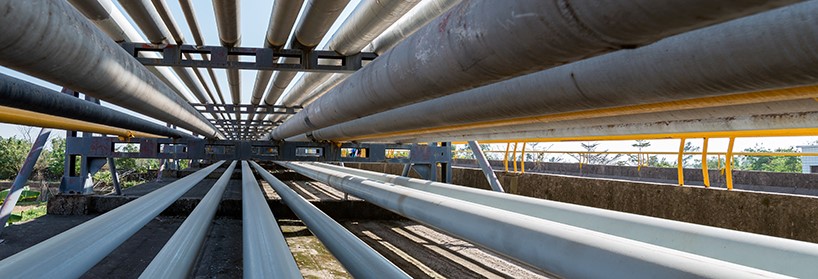Home » Blog » Trading & Risk Management » Minimizing Regulatory Compliance Costs Can Increase Pipeline Profitability
Minimizing Regulatory Compliance Costs Can Increase Pipeline Profitability
For many operators of interstate natural gas pipeline and storage facilities, the last few years have been nothing short of tumultuous, with a huge blend of unfathomable opportunities. This paradox, occasioned by the emergence of natural gas as a preferred and primary fuel for power generation over fossil fuels and accentuated by technological advances and shifting public sentiment for cleaner generation sources, is causing significant implications in the gas and power markets.
While this demand for gas-for-power led to significant business growth in the transportation and storage sectors, the polar vortex of 2014 and the consequent heavy pipeline utilization constrained existing infrastructure, as gas-for-power demand exceeded supply capability. As the demand for natural gas-for-power escalated, the effect on gas/power markets was catastrophic. Spurred by increased demand, gas prices rose, which in turn caused a sharp rise in costs and volatility in electric power prices. Pipeline and storage operators suddenly realized that their legacy pipeline management solutions for managing their transportation and storage operations could not keep up with this rapidly evolving market environment.
To help address this growing gas-for-power challenge, in March 2014, FERC issued a Notice of Proposed Rulemaking (NOPR) aimed at changing the Gas Day and pipeline nominations to better coordinate with the electric power industry. This sparked a big debate, given the fundamental historical independence of the gas and power industries. This NOPR wasn’t the first in the efforts to coordinate gas and power. Prior to its issuance, FERC was already hard at work on this problem and had created a Gas-Electric Coordination Commission to work towards achieving consensus on key issues. After many months of work and diligent effort, the commission issued its 8th and final report on December 18, 2014, with the final ruling issued on April 16, 2015.
The final ruling adopted two of NAESB’s proposals—the nomination timeline and the addition of a third intraday nomination cycle. This was designed to help shippers during the gas operating day by allowing them to optimize their scheduling as market conditions change. In its Final Rule, FERC recognizes that “regional efforts to address generator performance may result in natural gas-fired generators and other market participants in these regions taking actions to alleviate some of the electric industry fuel supply concerns underlying the Gas Day proposal in the NOPR.”
Despite its name, this is certainly not the “Final” regulatory change the industry will see, even in the relatively short term. NAESB standards and FERC regulations will constantly evolve to help better meet the power and supply needs of the public, as well as the coordination needs of the industry. Despite the importance of these changes, staying compliant with regulations will be a major challenge for Transportation Service Providers (TSPs) — especially those who rely on legacy, in-house built software systems to manage their operations. Pipeline and storage operators can reduce their IT maintenance costs associated with these constant changes (and the risks of large non-compliance fines) by utilizing a pipeline management system that has been certified by NAESB as meeting the latest Wholesale Gas Quadrant (WGQ) 3.0 standards.
There are a few key elements of the Final Rule that are particularly important to pipeline operators:
- Deadlines within the Timely Nomination Cycle were moved to help gas-fired generators better coordinate their gas nominations with their obligations for dispatching electric power
- The Final Rule reduces processing times between several intraday deadlines. As a result, FERC encourages shippers to invest in faster, computerized scheduling systems
- By making the Intraday 2 Nomination Cycle bumpable, firm shippers will hopefully be able to adjust their nominations to changes in both the weather and load
- To provide more certainty to interruptible transactions, the Final Rule introduces a new, no-bump Intraday 3 Nomination Cycle starting at 7:00 p.m. CCT
- The Final Rule also requires pipelines to offer multi-party firm transportation contracts, but only if requested to do so by a shipper
The use of natural gas for electric power generation will undoubtedly continue to drive market and regulatory changes in the coming years. Pipeline operators, shippers, and electric generation owners will need to stay on their toes as these developments unfold.
About the Author:
Sheldan Perry is a highly skilled professional with more than 25 years of detailed functional and technical knowledge in Oil and Gas, Pipeline Transportation, and Energy Software Development. Mr. Perry is currently the Manager of Gas Systems at OATI and is responsible for coordinating the development of a natural gas transportation management system and maintaining the existing gas management system.
- March 23, 2017
